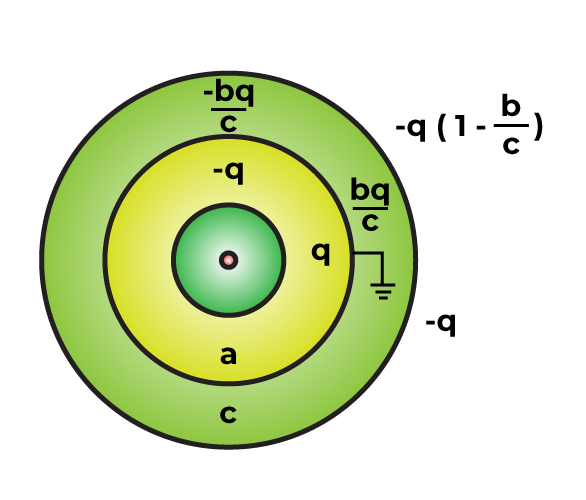The electric field at a distance of 1.5 m from an infinite charged sheet is of magnitude, | e | = 10 5 nc − 1 , directed normally toward the sheet. What is the surface charge density, σ , of the charged sheet? We finished off the last chapter by using gauss’s law to find the electric field due to a point charge. This is an important first step that allows us to choose the appropriate gaussian surface. Find the flux through a spherical surface of radius a = 80 cm surrounding a charge of 12 nc.
Note that this means the magnitude is proportional to the portion of the field perpendicular to the area. This total field includes contributions from charges both inside and outside the gaussian surface. The field e → e → is the total electric field at every point on the gaussian surface. We finished off the last chapter by using gauss’s law to find the electric field due to a point charge.
The electric field at a distance of 1.5 m from an infinite charged sheet is of magnitude, | e | = 10 5 nc − 1 , directed normally toward the sheet. The other one is inside where the field is zero. This total field includes contributions from charges both inside and outside the gaussian surface.
Web draw a box across the surface of the conductor, with half of the box outside and half the box inside. \ (\nabla \cdot b \sim \rho_m\). The electric flux is obtained by evaluating the surface integral. Web gauss’s law for electricity states that the electric flux φ across any closed surface is proportional to the net electric charge q enclosed by the surface; The field e → e → is the total electric field at every point on the gaussian surface.
\[\phi_{closed \, surface} = \dfrac{q_{enc}}{\epsilon_0}.\] Apply gauss’s law to calculate e: As examples, an isolated point charge has spherical symmetry, and an infinite line of charge has cylindrical symmetry.
Web To Use Gauss’s Law Effectively, You Must Have A Clear Understanding Of What Each Term In The Equation Represents.
Web problem a charge of magnitude − 4 × 10 − 9 c is distributed uniformly in a solid sphere of unit radius. Web applications of gauss's law (basic) (practice) | khan academy. \[\phi_e=\frac{q_{in}}{\epsilon_0}=\frac{q}{\epsilon_0}\] next, use the definition of the flux to find the electric field at the sphere's surface: The electric flux is obtained by evaluating the surface integral.
What Is The Ratio Of Electric Fluxes Through The Two Surfaces?
What is the electric field, e r / 2 , at a point that is half a radius away from the center of the sphere? The charge enclosed by the cylinder is σa, so from gauss’s law, 2ea = σa ε0, and the electric field of an infinite sheet of charge is. Web draw a box across the surface of the conductor, with half of the box outside and half the box inside. Web applying gauss’s law 1.
\ (\Nabla \Cdot B \Sim \Rho_M\).
Web problems on gauss law. Web gauss's law (practice) | khan academy. \[\phi_{closed \, surface} = \dfrac{q_{enc}}{\epsilon_0}.\] Web gauss's law is one of the four maxwell equations for electrodynamics and describes an important property of electric fields.
This Total Field Includes Contributions From Charges Both Inside And Outside The Gaussian Surface.
Thus, σ = ε 0 e. Calculate qin, charge enclosed by surface s 5. The electric flux through a surface is proportional to the number of field lines crossing that surface. 0 surfaces closed ε in e q φ = ∫∫e⋅da = gg φ =∫∫ ⋅ s e a gg e d
In this chapter we provide another example involving spherical symmetry. This is an important first step that allows the choice of the appropriate gaussian surface. Web draw a box across the surface of the conductor, with half of the box outside and half the box inside. Web to use gauss’s law effectively, you must have a clear understanding of what each term in the equation represents. Apply gauss’s law to calculate e:



